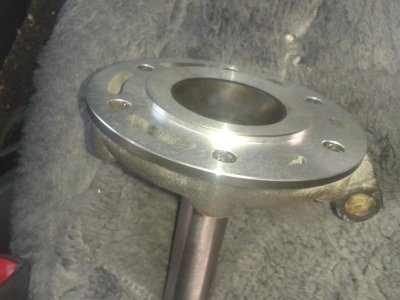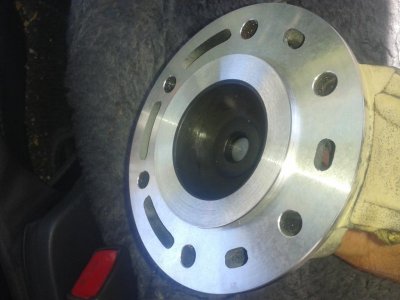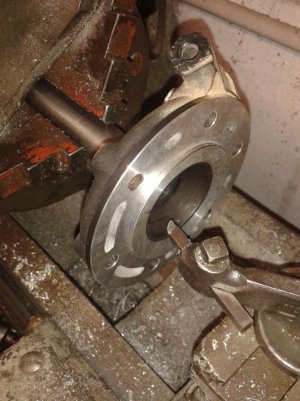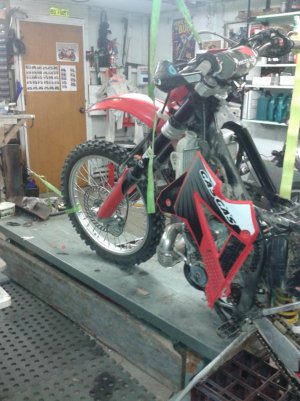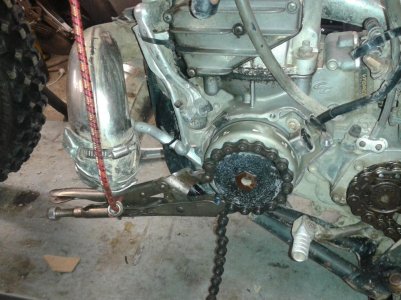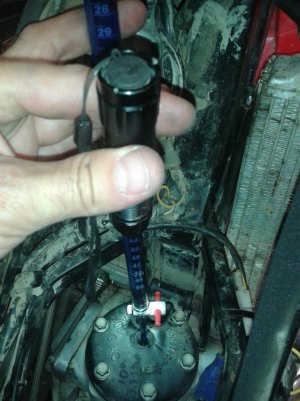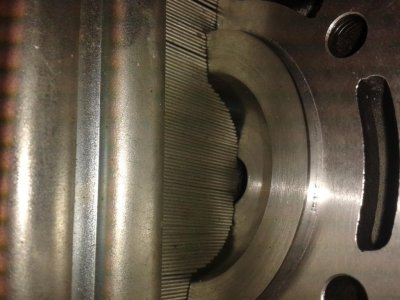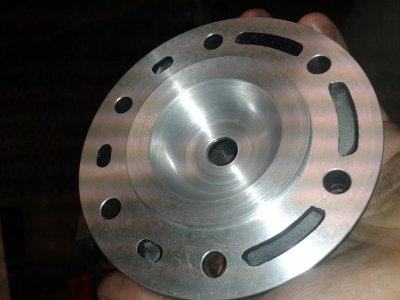(F5)
Gold Level Site Supporter
Well I might as well start a new thread for this, there have been a couple before but not with quantitative figures that I have seen.
Clearly if this gets beyond you there are plenty of tuners that will take your money for their well earned development time & expertise machining stuff.
This is my take doing it myself using fairly simple well trodden paths. I've done this a heap of times on small cc roadrace bikes and the odd larger roadbike & dirtbike. The principles are the same although the application requires a different approach for best results. -read: roadrace application lots of revs, lower MSV, top end power over acceleration.
Anyhoo this is a playbike to me, not a racebike. one of the big considerations is being able to kick it over in snotty trails & I'm 5'8". The advantage here is there is a compression hole drilled above the exhaust port to reduce the compression ratio, but it is only ~4mm so while it will help at kicking speeds it shouldn't have much affect at high rpm. If you were going to Motard this you'd block it up.
That & the easy compression ratio is why the 300 is as easy to kick over as the 200. I intend to keep the comm the same to retain the same level of ease. That said. maybe I'll be a little greedy and crank it 1/2 a ratio & see how it goes, I can easily pull a bit more out if needs be. Easier than putting metal back in.
OK to start with here are a couple of pics & I'll add how I got there next post. You can see the mandrel which screws into the spark plug hole. It needs to be flat/straight to be worth while.
Clearly if this gets beyond you there are plenty of tuners that will take your money for their well earned development time & expertise machining stuff.
This is my take doing it myself using fairly simple well trodden paths. I've done this a heap of times on small cc roadrace bikes and the odd larger roadbike & dirtbike. The principles are the same although the application requires a different approach for best results. -read: roadrace application lots of revs, lower MSV, top end power over acceleration.
Anyhoo this is a playbike to me, not a racebike. one of the big considerations is being able to kick it over in snotty trails & I'm 5'8". The advantage here is there is a compression hole drilled above the exhaust port to reduce the compression ratio, but it is only ~4mm so while it will help at kicking speeds it shouldn't have much affect at high rpm. If you were going to Motard this you'd block it up.
That & the easy compression ratio is why the 300 is as easy to kick over as the 200. I intend to keep the comm the same to retain the same level of ease. That said. maybe I'll be a little greedy and crank it 1/2 a ratio & see how it goes, I can easily pull a bit more out if needs be. Easier than putting metal back in.
OK to start with here are a couple of pics & I'll add how I got there next post. You can see the mandrel which screws into the spark plug hole. It needs to be flat/straight to be worth while.
Attachments
Last edited:

